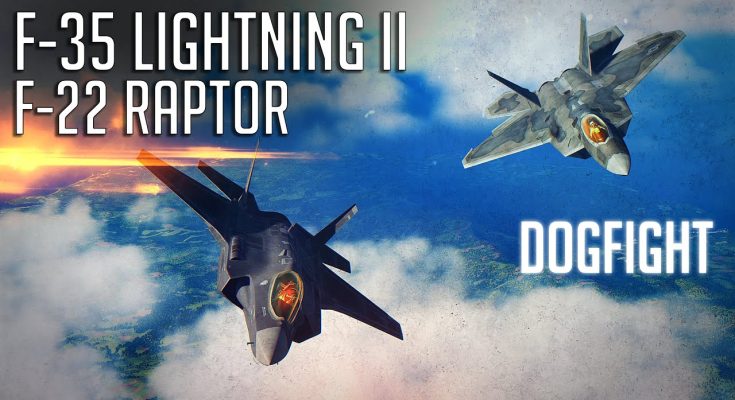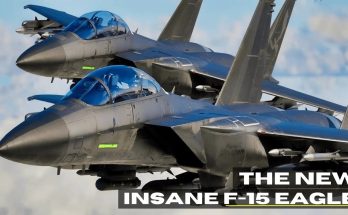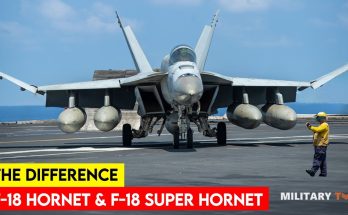F-22 Raptor vs F-35 Lightning II Dogfight | Digital Combat Simulator
The F-22 Raptor and the F-35 Lightning II are two of the most advanced fifth-generation fighter jets in the world, representing the cutting edge of stealth, agility, and technology. In a simulated dogfight, as seen in Digital Combat Simulator (DCS), the contrast between these two remarkable aircraft becomes clear—each has its own strengths, weaknesses, and strategies for dominance in the air.
The Aircraft: F-22 Raptor and F-35 Lightning II
The F-22 Raptor is a pure air superiority fighter designed primarily for air-to-air combat. Developed by Lockheed Martin, it is known for its unmatched maneuverability, supercruise capability (the ability to fly at supersonic speeds without afterburners), and exceptional stealth. The F-22 is optimized for stealth in both detection and tracking, making it a formidable opponent in close and beyond-visual-range combat. It is equipped with advanced avionics and radar systems, with an emphasis on air dominance and situational awareness.
The F-35 Lightning II, also developed by Lockheed Martin, is a multirole fighter designed for both air-to-air and air-to-ground operations. The F-35’s versatility is one of its standout features. It comes in three variants—F-35A (conventional takeoff and landing), F-35B (short takeoff and vertical landing), and F-35C (carrier-capable)—making it a flexible asset for a wide range of missions. The F-35 features advanced stealth, integrated avionics, and sensor fusion, offering unparalleled situational awareness. However, its design prioritizes multirole flexibility rather than pure air superiority, unlike the F-22.
The Dogfight: F-22 vs. F-35 in Digital Combat Simulator
In DCS, a dogfight between the F-22 and F-35 showcases their differences in role, design, and combat tactics. Both jets rely on cutting-edge technology, but they excel in different aspects.
F-22’s Advantages
The F-22 Raptor’s primary strength lies in its agility and supercruise ability. In a dogfight, the F-22’s performance is legendary, as it can maintain supersonic speeds without relying on fuel-draining afterburners. This gives the Raptor an edge in sustained high-speed maneuvers and energy management. The F-22’s thrust-vectoring nozzles allow it to perform extreme maneuvers, making it an almost untouchable target in close combat.
Its radar and stealth capabilities are designed for detecting and engaging enemies at long range, allowing the F-22 to initiate a fight on its terms. When it comes to BVR (beyond visual range) combat, the F-22 can track and lock onto targets far beyond the visual horizon, launching long-range missiles before the enemy even knows it’s being targeted. The F-22 can also use its superior situational awareness to outmaneuver opponents in a visual dogfight by exploiting its high energy and speed.
F-35’s Advantages
While the F-22 dominates in air superiority and maneuverability, the F-35 excels in versatility, sensor fusion, and survivability. The F-35’s advanced radar system, coupled with its sensor fusion technology, allows it to track multiple targets and gain comprehensive situational awareness, even when dealing with multiple threats. This could potentially allow the F-35 pilot to gain an advantage in an extended engagement.
In a close-range dogfight, the F-35’s agility is no match for the F-22’s extreme maneuverability, but the F-35 can still hold its own due to its integrated weapons systems and electronic warfare capabilities. Its advanced targeting pods and distributed aperture system (DAS) give it unparalleled visibility, making it easier to track the F-22 in even the most challenging conditions. Additionally, the F-35’s ability to engage both air and ground targets effectively adds another layer to its potential combat versatility.
The Outcome of the Dogfight
In a DCS dogfight, the outcome would depend largely on the tactics and the environment of the engagement. The F-22, with its superior dogfighting capabilities, would likely dominate in close-quarters combat, using its agility and stealth to outmaneuver and surprise the F-35. In contrast, the F-35 could hold an edge in a more extended engagement or if it used its sensor fusion and integrated weapons to surprise the F-22 before it could get into a more favorable position.
The F-35’s versatility gives it an advantage in multi-role scenarios, but when it comes to pure air combat, the F-22 remains the king of the skies, at least in terms of close-range engagements and agility. However, if the F-35 could rely on its stealth and superior sensors to initiate the fight first, it could create opportunities for an ambush, even against the F-22.
Conclusion
In the world of digital combat simulators, the F-22 and F-35 are both formidable fighters, but they shine in different areas. The F-22’s superiority in air-to-air combat is clear in terms of maneuverability, stealth, and energy management. The F-35, on the other hand, offers an edge in sensor fusion, versatility, and multirole capabilities, though it might struggle against the F-22 in close combat.
In a dogfight scenario within Digital Combat Simulator, the F-22 would most likely have the upper hand in a traditional dogfighting scenario, but the F-35’s superior awareness and multirole design could allow it to exploit the right circumstances and potentially turn the tide in its favor.



